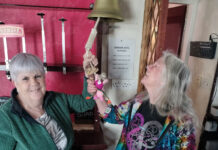Proposed new set-up aims to reflect ‘changing nature’ of SLTA
A MAJOR shake-up of the operating structure of the Scottish Licensed Trade Association (SLTA) has been proposed as the group continues work on its three-year ‘change agenda’.

The suggested changes were unveiled at the SLTA’s AGM earlier this month by Peter Lederer, patron of the SLTA and chair of the external advisory group, which was set up last year to independently guide the association going forward.
The proposed changes, which have gone out to members as part of a consultation process running until May 31, would see the association adopt a “flat operating structure based on need and skill set”.
A board with “responsibility for governance and the long-term national strategy” of the trade group would be established, chaired by an “experienced individual from the drinks industry”; the SLTA president would be vice-chair of the board during their term of office and the board would comprise a minimum of seven members, with additional members appointed “based on their skills set in fields such as legal, corporate, multi-operator, training, communications and public relations”.
The current SLTA executive committee would become a regional executive committee with a remit of communicating with the organisation’s wider membership; two regional executive committee members would be elected by the committee each year to sit on the SLTA board.
Speaking at the AGM, Lederer said the proposed new structure is designed to reflect the wider changes in the SLTA.
“It is important to maintain the tradition but balance that with relevance for today,” he said. “We had long discussions about the structure, and thought about how we would design the SLTA if we were setting it up today. The proposed changes would keep us fleet of foot and able to react to issues quickly.”
SLTA chief executive Paul Waterson said: “The executive committee will still be in charge of the manifesto and policy in terms of the trade. The proposed changes reflect the changing nature of the SLTA and are more in sync with what the SLTA is about now.”



















